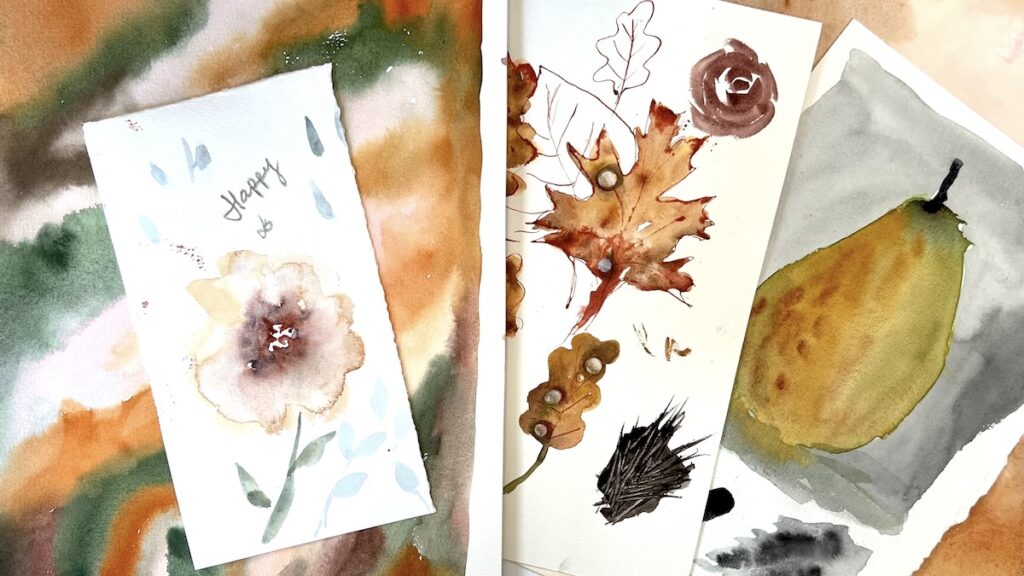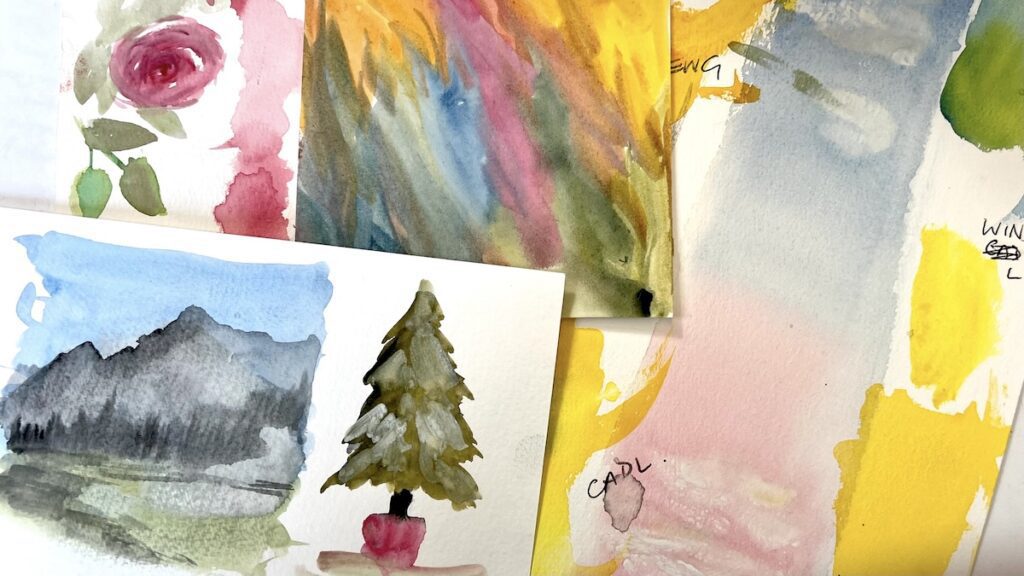
Watercolor painting is like dancing with a slightly tipsy partner—unpredictable, spontaneous, and full of surprises. If you’re over a certain age and diving into watercolor for the first time, congratulations! You’re about to experience an art form that’s as much about letting go as it is about creating something beautiful. Forget perfection; this is about having fun, embracing the happy accidents, and perhaps occasionally muttering, “Well, that didn’t go as planned.”
The Joy of Embracing the “Oops” Moments
One of the most liberating aspects of watercolor painting is that things don’t always go according to plan—and that’s perfectly fine! You might have envisioned a serene landscape with soft blues and delicate greens, but somehow, your painting looks like a storm just rolled in, complete with blobs, drips, and a few suspiciously muddy puddles. Watercolor loves to do its own thing, and that’s part of its charm.

Instead of getting frustrated when the paint does something unexpected, try to see the humor in it. That unexpected bloom (a fancy word for when water spreads paint unpredictably) could become a cloud, a flower, or the perfect excuse for an abstract masterpiece. Remember, Bob Ross didn’t call them “mistakes”—he called them “happy little accidents.” So, go ahead and laugh when your sunset looks more like a spaghetti explosion; you’re still creating something uniquely yours.
The Battle of the Water: Too Much, Too Little, or Just Enough?
If there’s one thing you’ll quickly learn, it’s that water is both your best friend and your most unpredictable roommate. You’ll carefully dip your brush, add just the right amount of water, and—whoosh!—the paint races across the paper like it’s late for an appointment. It’s like trying to control a toddler on roller skates.
Finding the right water-to-paint ratio is a bit like figuring out how much sugar to put in your tea. Too much water and everything gets washed away in a soggy mess; too little, and your brush might as well be dragging sand across the paper. But somewhere in between, there’s a sweet spot where colors blend effortlessly, and your painting comes alive. Until then, keep a stack of tissues handy. They’re not just for tears of joy (or mild frustration)—they’re also great for soaking up the unexpected lakes that form on your paper.

The Brushes: Tools of Creation or Weapons of Chaos?
Let’s talk brushes. You’ve got round brushes, flat brushes, fan brushes, and that one weird brush you bought because it looked fancy but have no idea how to use. As a beginner, you might find yourself gravitating towards just one or two, while the rest languish sadly in your jar, waiting for their moment in the spotlight.

Brushes are like old friends—each has its own quirks. The round brush, for example, is versatile and forgiving, great for everything from broad strokes to tiny details. The flat brush, on the other hand, is like your no-nonsense aunt—perfect for straight edges and bold moves, but not great at subtlety. And let’s not forget the mop brush, a fluffy beast that seems determined to cover your entire paper in one swoop. Play with them all! Each brush has its own personality, and part of the fun is figuring out which one best suits your style (or your current mood).
The Paper Problem: When Your Masterpiece Turns into a Wrinkly Mess
Ah, watercolor paper. To the uninitiated, it might look like any old sheet of paper, but seasoned artists know it’s the unsung hero of watercolor painting. If you’ve ever painted on the wrong type of paper (say, a flimsy printer sheet), you know the horror of watching your masterpiece buckle, warp, and resemble a soggy napkin by the time you’re done.
Invest in some decent watercolor paper—it doesn’t have to be fancy, but it does need to be thick enough to handle all that water. A good 140 lb (300 gsm) paper will save you from the dreaded paper curl and make you feel like a pro, even if your painting still looks like a colorful Rorschach test.

Painting Upside Down: A Technique or Just Forgetfulness?
Let’s be honest—sometimes it’s hard to tell which end is up, especially when you’re caught up in the flow of painting. One moment you’re confidently adding shadows, the next you realize you’ve been painting upside down for the past ten minutes. But who’s to say that’s wrong? Many artists intentionally flip their work to gain a fresh perspective or to tackle tricky sections. So, if you find yourself painting upside down, just roll with it. Maybe you’re not forgetful—maybe you’re avant-garde!
Wrapping Up: Paint with Joy, Laugh Often, and Let the Water Flow
Watercolor painting is about more than just creating art; it’s about embracing the journey, the surprises, and the inevitable “oops” moments. It’s a chance to play, to let your inner child come out, and to have a good chuckle when things go hilariously wrong. So, grab your brushes, splash some paint, and most importantly, have fun. After all, at this stage in life, isn’t it all about enjoying the process and letting go of the little things—like whether that blue blob was supposed to be a flower or a fish?
I can empathise with everything you say – especially about taking up watercolour in your old age! I’m 81 and joined a local art group last year and love it! I started with a bang but a year later am beginning to realise I have so much to learn and any masterpiece I may, or may not produce, is going to take until I finally fall off my perch! Until then I have to tell myself everything you’ve said – slow down and enjoy the whole process.
I like your chit- chat during the tutorials so keep it up.
I most of all enjoyed watching you paint that wonderful, wonderful floral extravaganza in front of a house. If I could do anything remotely like that on an A4 size paper I’d be really pleased with myself.
Thank you for all the downloadable sketches. They’re a huge help.